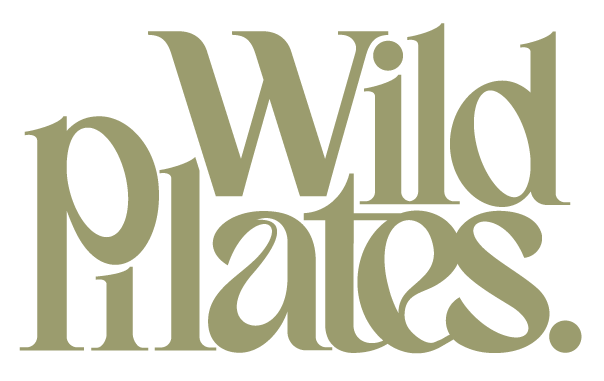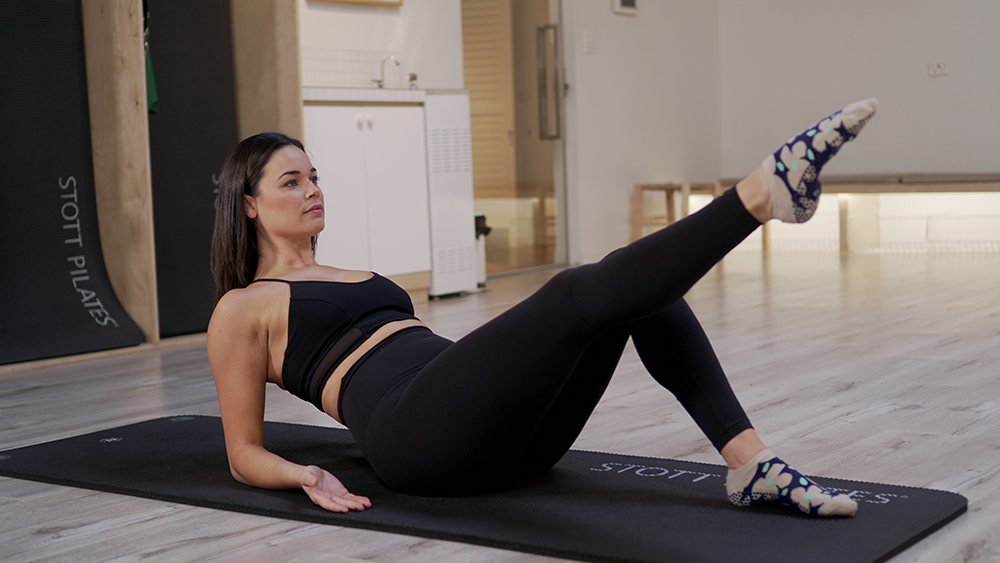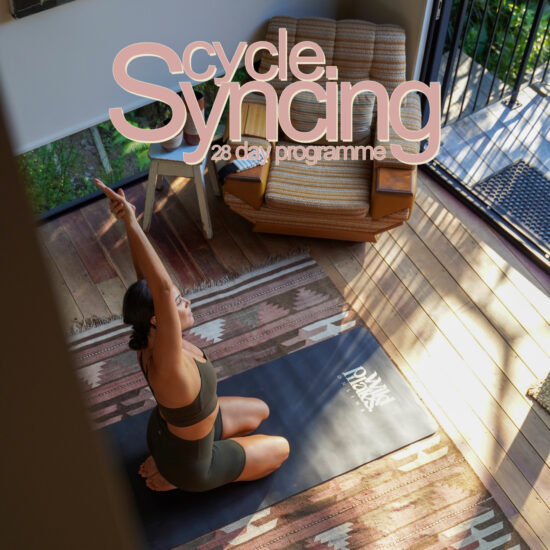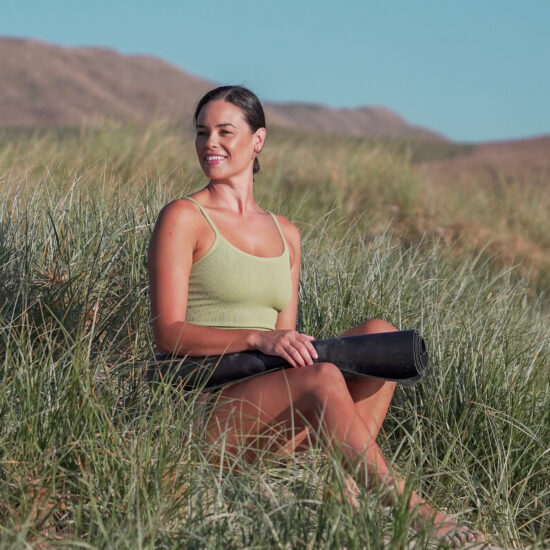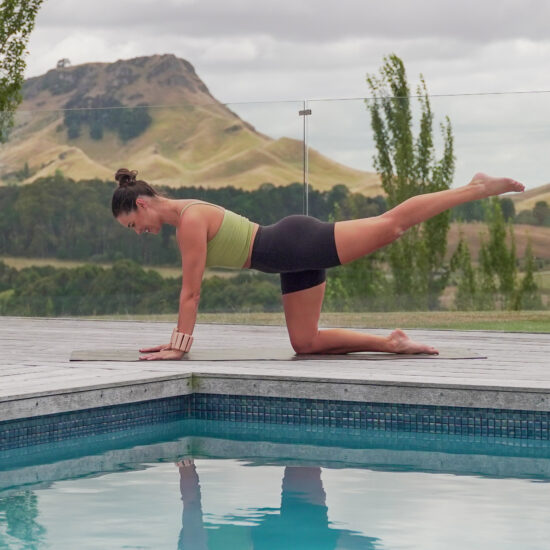“All of the Pilates exercises are designed with a purpose to improve your ability to live your life: think walking, getting up and down stairs, sitting with more ease. Pilates will help reduce the effects of those changes to your body with that focus on posture and core strength so that will reduce the pain or immobility that might be experiencing“
What is Pilates?
Pilates is a series of exercises designed to build strength in the body while improving posture alignment and flexibility
More stability is achieved in the body by strengthening those small muscles that support your joints and your spine.
What happens to our bodies as we age ?
One of the most obvious changes is the change in spine shape and therefore the change in posture.
As we age our spine tends to get closer to the ground and round forward and to be able to still see where you are going you can end up tipping your head back , and that is a huge change, which puts a lot of pressure on your body each day and can cause a lot of pain and balance issues
Past 50 – bone mass declines after peaking in the 20s-30s and the effect of years of bad posture or and old injury will really start to show up here in the pain in the body especially back pain and how you move
Past 60/65 – there is a decrease in strength and muscle mass due to the declining numbers of muscle fibers
Pilates is going to focus on building the strength to combat and support those changes.
Why is it a great option as we age?
The ability to move efficiently becomes harder as we age, sometimes the answer to that is to then do less but you really want to reduce the time spent in sitting positions.
Pilates targets those muscles we need to strengthen to improve posture and support all of the changes to your spine and body when you age.
Its low impact with less pressure on your joints while exercising, if you have had any issues with your knees, hips or shoulder that will be really important for you, it’s also low intensity so you can focus on strengthening and lengthening even when your cardio function decreases.
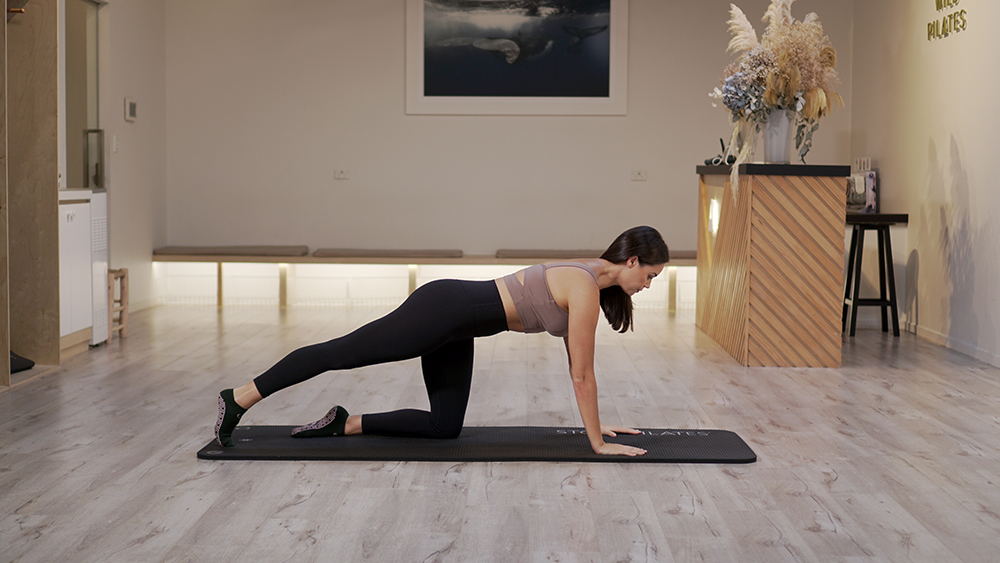
What improvements can you make/see?
Most importantly, moving better throughout the day. All of the Pilates exercises are designed with a purpose to improve your ability to live your life think walking, getting up and down stairs, sitting with more ease
Pilates will help reduce the effects of those changes to your body with that focus on posture and core strength so that will reduce the pain or immobility that might be experiencing
We see improvements in the balance and coordination and reduces the number of falls which due to that decreased bone mass that’s really important.
Would you do different programmes for men and women?
Depends on the client’s history and goals but Pilates is a series of exercises designed to support the aging body for both males and females.
Males lose two thirds the bone mass of same aged women and women are more likely to have osteoporosis so it is really important for both males and females to keep their strength up to avoid falls or pain in the body.
I would also say I do get asked if Pilates is just for females , which is absolutely not the case, both males and females will benefit greatly from Pilates and it was originally designed by a man for men so it’s great for everyone.
How important is it to set some goals when you start a pilates or any exercise regime?
I think it is important to first of all be aware of why you are starting or getting back into a regime in the first place.
That way you will be able to tailor the sessions to your needs and it also really helps with the motivation to continue.
But my advice would always be just to get started first and maybe your not sure what your goals are and an instructor can have a look at your body and suggest some goals to improve how you move.
What should you think about when making those goals?
Be really clear about what you want to achieve, Whether it be spending active time with your grandkids, gardening, walking or just reducing the body aches and pains in your body.
Or it might be more specific like some hip stability or glute work after a hip replacement.
Make sure it relates back to your life and how Pilates can improve it.
From there set a date that you want to start by or how many times a week you would like to do Pilates so it’s going to give you something to work towards and you’re more likely to continue and stick with it if you have set these guidelines in place.
What should people be mindful of?
Be mindful of how it makes you feel and that is a great motivator to prioritise this going forward.
Check in with your doctor first, then if you have clearance start slowly, see a trained instructor or follow a programme and work at your own pace.
You are possibly learning a new form of exercise. Listen to how to engage the muscles and which muscles you are actually trying to work to get the most out of it.
Avoid rushing through the exercises or trying to keep up with advanced workouts , be very clear what you want to get out of it and choose the workouts accordingly.
What are the main considerations?
Every client is different so we always suggest checking in with your doctor especially if you are a mature client.
It can be common to have knee or hip replacements and strengthening around these joints is going to ease some pain but you may need to make some modifications and your Pilates instructor will be more than happy to help you with this for example if you can’t kneel we can give you lots of alternatives.
Same thing with arthritis or osteoporosis there are so many benefits but you will just want to make sure you’re doing what’s best for you and checking in with a doctor who knows your history and medications you might be on first.
